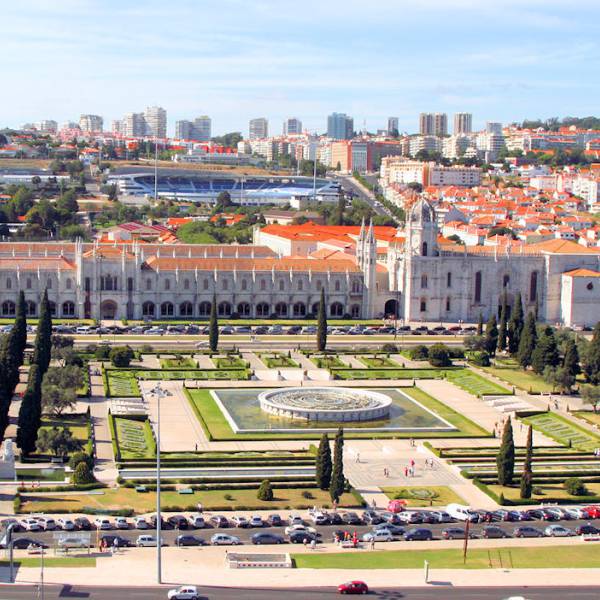One of the most distinctive features of Empire Square is the presence of captivating sculptures depicting seahorses. These sculptures, designed by the talented sculptor António Duarte, were installed in 1940 and have become iconic symbols of the square. The seahorses pay homage to Portugal's deep connection with the sea, reflecting the nation's rich maritime history and exploration.
In addition to its sculptural adornments, Empire Square is also home to the Palácio do Ultramar, or the Overseas Palace. This magnificent architectural gem, situated on the eastern edge of the park, was conceived as a testament to Portugal's historical ties with its overseas territories. Designed by architects Cristino da Silva and Jacques Carlu, the Palácio do Ultramar stands as a striking landmark, symbolizing the nation's imperial past and serving as a reminder of its extensive colonial empire.
Empire Square continues to evolve and adapt to the changing times. In 1973, a commemorative monument honoring the esteemed poet Augusto Gil was installed in the square. This monument, featuring a bronze medallion and inscription by the municipal council of Lisbon, pays tribute to Gil's significant contributions to Portuguese literature and serves as a reminder of the city's vibrant literary heritage.
The architectural layout of Empire Square is both visually captivating and harmoniously designed. Nestled to the south of the Jerónimos Monastery (Mosteiro dos Jerónimos), a UNESCO World Heritage site, and west of the Belém Cultural Center (Centro Cultural de Belém), a renowned cultural institution, the square provides a seamless connection between historical landmarks and contemporary cultural spaces. The square itself is rectangular, measuring approximately 175 by 175 meters, and is divided into successive quadrangles, creating a series of passages and green spaces. This thoughtful design allows visitors to explore the square at their leisure, discovering its hidden corners and peaceful retreats.
At the heart of Empire Square lies a magnificent illuminated fountain, a central feature that adds grandeur and beauty to the surroundings. The fountain, situated on a square platform covering an area of 3,300 square meters, serves as a captivating focal point. With its graceful water displays and enchanting lighting, the fountain creates a mesmerizing ambiance, particularly in the evening when it casts a warm glow over the square.
Lisbon.vip Recommends
Beyond its architectural and artistic significance, Empire Square has also played a role in the world of sports. The roads surrounding the square have served as a special stage in the Rally de Portugal, a prestigious motorsport event held between 2011 and 2014. This unique intersection of sporting excellence and historical ambiance adds another layer of intrigue and excitement to the square's rich legacy.
Today, Empire Square continues to captivate visitors with its timeless charm, historical significance, and serene ambiance. The seamless blend of architectural landmarks, captivating sculptures, lush green spaces, and the gentle flow of water creates a harmonious and inviting atmosphere. Whether strolling through the park, admiring the intricate details of the seahorse sculptures, or simply enjoying a moment of tranquility, visitors are transported to a bygone era, where the grandeur of Portugal's imperial past comes to life.
Empire Square stands as a testament to Portugal's rich heritage, offering a glimpse into its historical achievements and cultural legacy. As one explores the square's picturesque surroundings, the weight of history is palpable, and the echoes of past glories can be felt in every corner. It serves as a reminder of the nation's remarkable contributions to the world and its enduring cultural identity. Empire Square is an emblem of Lisbon's cultural tapestry, an iconic destination that invites visitors to immerse themselves in the grandeur of Portugal's imperial past and experience the vibrant spirit of the city.
Map View





